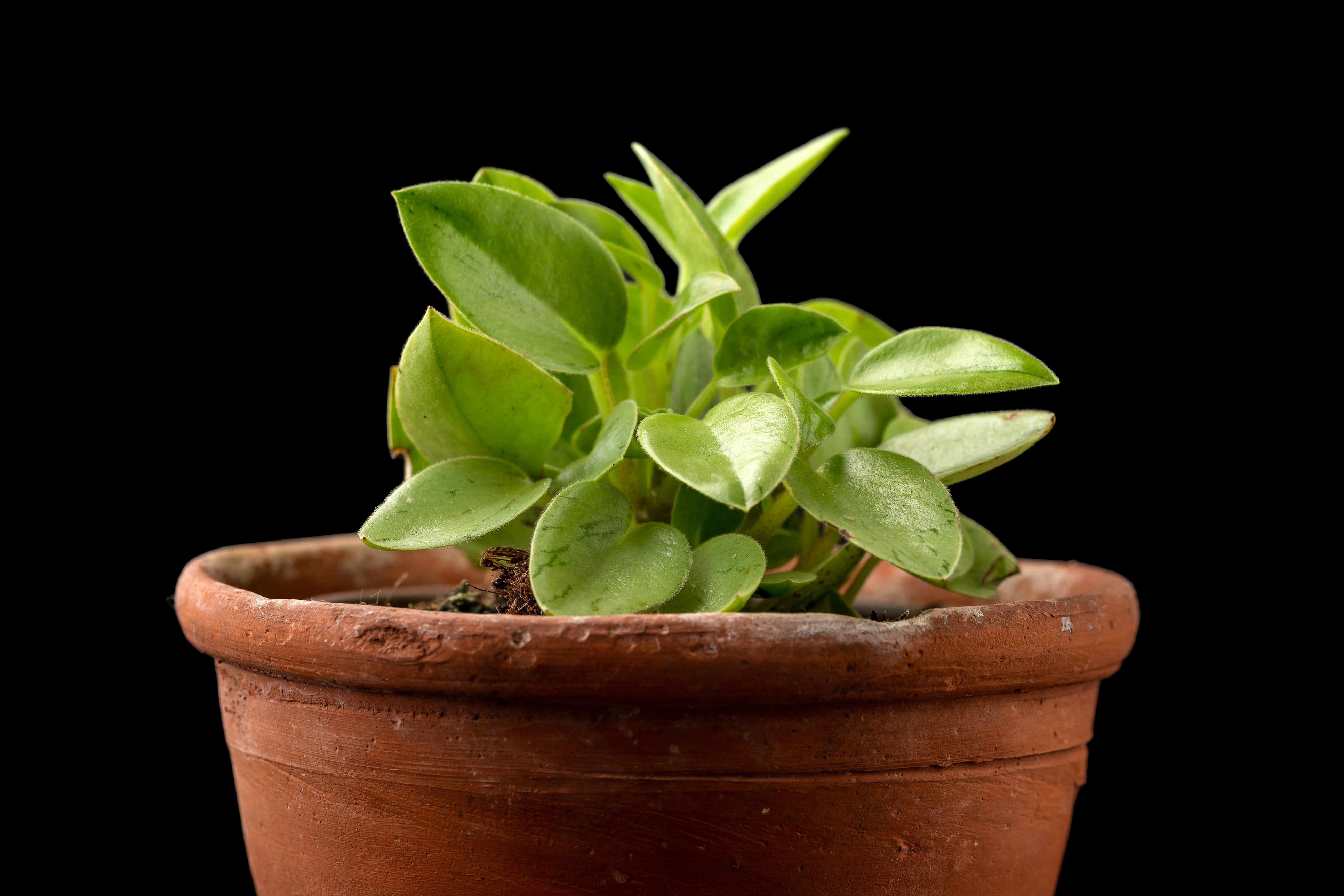Peperomia orba
(Peperomia orba)

Description
Peperomia is one of the two large genera of the family Piperaceae. It is estimated that there are at least over 1,000 species, occurring in all tropical and subtropical regions of the world. They are concentrated in northern South America and Central America, but are also found in Africa, southern Asia, and Oceania. The exact number is difficult to tell as some plants have been recorded several times with different names (c. 3,000 names have been used in publications) and new species continue to be discovered. Peperomias have adapted to many different environments and their appearance varies greatly. Some are epiphytes (growing on other plants) or lithophytes (growing on rock or in rock crevices), and many are xerophytes (drought-tolerant) either with thick succulent structures or with underground tubers (geophytes). Most species are compact perennial shrubs or vines. The genus name Peperomia was coined by Spanish botanists Ruiz López and Pavón Jiménez in 1794 after their travels in Peru and Chile. Peperomia plants do not have a widely accepted common name and some argue that it is better to use the genus name, as is the case with genera such as Petunia and Begonia. They are sometimes called radiator plants, a name possibly coined by L.H. Bailey because many of them enjoy bright and dry environments similar to a windowsill above a radiator. Peperomias vary considerably in appearance (see gallery below) and there is no universally accepted method of categorising them, although three main groups can be distinguished. Most species are compact and usually do not exceed 30 cm (12 in) in height. First are plants with decorative foliage, which often grow in rain or clouds forests as epiphytes. They are adapted to living in small shady crevices on, for example, trees, with small root systems. As they do not have access to ground water they are typically succulent to a certain degree which in many species shows as thick, fleshy leaves, which have a waxy surface and are sometimes rippled. The leaves may be oval with the leafstalk at or near the center of the leaf blade, or they may be heart-shaped or lance-shaped; their size varies from 2.5–10 cm (1–4 in) long. They may be green or striped, marbled or bordered with pale green, red or gray, and the petioles of some kinds are red. They also enjoy high air humidity, warm temperatures, and grow all year round. Examples include P. argyreia, P. caperata, P. nitida, and P. obtusifolia.
Taxonomic tree:







